Crisis Communication
advertisement
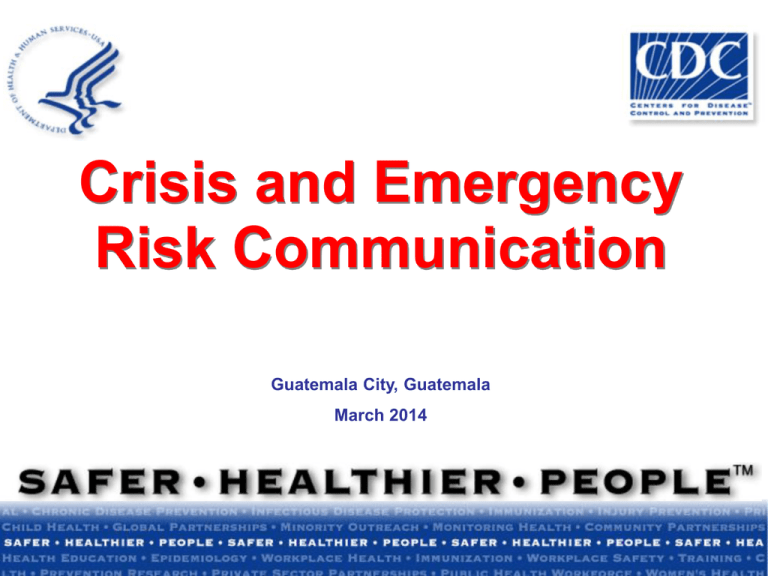
Crisis and Emergency Risk Communication Guatemala City, Guatemala March 2014 Risk Communication vs Emergency Communication During emergencies public health responders must effectively ensure the following types of communication – Institutional Intra-inter-agencies/institutions, across levels Inter-sectorial – Operational To health care workers and respondents (e.g. alerts, guidance documents To ensure the coordination of the response – To the public (risk communication) Health crisis are unique • Extremely time pressuring • Unpredictable & unfolding • Socially and economically disruptive • Behaviour–centred & anxiety generator • Involving multiple stakeholders • Shifting from national to international Communicating during crisis is a capacity requirement under the IHR Under the IHR, risk communication includes a range of interventions through preparedness, response and recovery of a health crisis for • informed decisions • positive behaviour interventions • maintenance of trust to minimize its public health impact. Risk Communication Working Group, March 2009, Lyon Risk assessment Risk perception Risk communication Risk management Do we have a shared understanding of ‘risk communication’? Risk Communication – Outbreak Communication – Crisis Communication – Emergency Communication Information – Education - Communication – Public Awareness – Public Education – Social Mobilization – Community Mobilization – Advocacy – Information Officer – Media Officer – Communication Officer – Reporting Officer – Advocacy Officer - Development Support Communication – Pandemic Communication – Animal Health Communication – Human Health Communication – Media Relations – Donor Relations – Corporate Relations – External Relations – Public Relations Risk Communication – Outbreak Communication – Crisis Communication – Emergency Communication - Behaviour Change Communication – Development Communication – Participatory Communication – Programme Communication – Information – Education - Communication – Public Awareness – Public Education – Social Mobilization – Community Mobilization – Advocacy – Information Officer – Media Officer – Communication Officer – Reporting Officer – Advocacy Officer Development Support Communication – Pandemic Communication – Animal Health Communication – Human Health Communication – Media Relations – Donor Relations – Corporate Relations – External Relations – Public Relations - Risk Communication – Outbreak Communication – Behaviour Change Communication – Development Communication – Participatory Communication – Programme Communication – Information – Education - Risk Communication – Outbreak Communication – Crisis Communication – Emergency Communication - Behaviour Change Communication – Development Communication – Participatory Communication – Programme Communication – Information – Education - Communication – Public Awareness – Public Education – Social Mobilization – Community Mobilization - Risk Communication – Outbreak Communication – Crisis Communication – Emergency Communication - Behaviour Change Communication Event management cycle WHO believes that it is high time to acknowledge crisis communication as essential to outbreak control as epidemiological training and laboratory analysis. Event detection Risk assessment Crisis communication WHO crisis communication guidance started in 2004 • Expert consultation on Outbreak Communication (2004) • WHO evidence-based communication guidance (2004) • Outbreak Communication Planning Guide (2008) • Communication for behavioural impact (COMBI) (2012) Literature & field experience « The overriding goal for outbreak communication is to communicate with the public in ways that build, maintain or restore Trust » WHO Outbreak Communication Guidelines Trust is the public perception of Your motives Your honesty Your skills Are the risk managers acting to safeguard my health? Are the risk managers holding back information? Are the risk managers skilled enough to do the job? Trust is the pillar of outbreak control « …the less people trust those who are supposed to protect them, the more afraid the public will be and less likely they will be to conform their choices and behavior with outbreak management instructions ». WHO Outbreak Communication Guidelines Building trust is also an internal process Trust is essential between • communicators and policy makers; • communicators and technical responders. Trust Policy makers The internal trust relationship is the “Trust Triangle” Crisis Communication - Core Capacity Components 2. Public communication coordination 1. Transparency and early announcement of a real or potential risk PLANNING 4. Listening through dialogue 3. Information dissemination including media relations 1. Transparency and Early announcement of a real or potential risk Those at real or potential risk can protect themselves; Trust between authorities populations and partners is maintained and strengthened. 2. Public communication coordination Existing public communication resources are used; Messages are coordinated and confusion and overlap are reduced; Reach and influence of provided advice are strengthened. 3. Information dissemination including Media relations Rapid and effective dissemination of information is crucial during health crisis and mass media are the pillar of it. Not only media! • • • • • • • • Health care workers; Local and religious leaders; Citizens’ representatives; SMS Social media; Internet; Toll-free telephone numbers; Door-to-door visits 4. Listening through dialogue Community perceptions of risks are understood; Adaptations to messages, materials and strategies are made; Effectiveness of communication efforts is ensured to support sound decision making. If crisis are difficult to predict, an outbreak communication strategy can be planned 1. Assessment 2. Coordination 3. Transparency People respond to what outberak controllers do, not just to what they say. 4. Listening 5. Communication evaluation 6. Emergency communication plan 7. Training Crisis communication must be integrated in risk management form the start. Crisis Communication Lifecycle • • • • • PreCrisis • • • • Explain about risks Inform Establish credibility Guide action Commit to communication Maintenance Initial Prepare Make alliances Agree on recommendations Test messages • • • • • • Educate for future response • Individual action • Support for relevant policies • Promote agency activities Resolution Foster understanding of risks Provide background Foster support for plans Listen Empower Evaluation • Evaluate plan • Lessons learned • Identify improvement Communication planning allows decision making 1. What is the situation? Evaluate the situation in context and time 2. Why communicate? Set objectives 3. To whom? Define target audience(s) 4. How? Outline strategy, channels and tools 5. When? Draw a timeline of action 6. Who? Identify roles and partners 7. With what? List human and economic resources 8. How is it going on? Monitor communication impact 9. How effective? Adjust the communication strategy Gaps and challenges (from experience and feedback) General devaluation of communication, not seen as a science; Disconnect between technical and communication responders; Low recognition of crisis communication capacity needs before a crisis starts; Perception of crisis communication as an “add-on” not integrated in planning processes; Limited financial and human resources dedicated to communication planning; Unsuitability of planned procedures due to other sectors’ involvement and/or lead taken by the highest government’s level. Crisis communication is designed for health crisis • Extremely time pressuring Information dissemination • Unpredictable & unfolding Dealing with uncertainty • Socially and economically disruptive Coordination - Listening • Behaviour–centred & anxiety generator Listening • Involving multiple stakeholders Coordination • Shifting from national to international Coordination Crisis Communication Resources • WHO Outbreak Communication Guidelines (2005) www.who.int/infectious-disease-news/IDdocs/whocds200528/whocds200528en.pdf • WHO Outbreak Communication Planning Guide (2008) www.who.int/ihr/elibrary/WHOOutbreakCommsPlanngGuide.pdf • WHO Communication for behavioural Impact (2012) http://www.who.int/ihr/publications/combi_toolkit_fieldwkbk_outbreaks/en/ • CDC Crisis and Emergency Risk Communication Manual http://emergency.cdc.gov/CERC/ • PAHO Risk and Outbreak Communication http://new.paho.org/hq/index.php?option=com_content&view=article&id=1940&Itemid =1923&lang=en Crisis Communication Lifecycle • • • • • PreCrisis • • • • Explain about risks Inform Establish credibility Guide action Commit to communication Maintenance Initial Prepare Make alliances Agree on recommendations Test messages • • • • • • Educate for future response • Individual action • Support for relevant policies • Promote agency activities Resolution Foster understanding of risks Provide background Foster support for plans Listen Empower Evaluation • Evaluate plan • Lessons learned • Identify improvement What the public seeks from your communication 5 public concerns. . . 1. Gain wanted facts 2. Empower decisionmaking 3. Involved as a participant, not spectator 4. Provide watchguard over resource allocation 5. Recover or preserve well-being and normalcy Crisis and Emergency Risk Communication impacts 5 organizational concerns -- you need to. . . 1. Execute response and recovery efforts 2. Decrease illness, injury, and deaths 3. Avoid misallocation of limited resources 4. Reduce rumors surrounding recovery 5. Avoid wasting resources 5 communication failures that kill operational success 1. 2. 3. 4. 5. Mixed messages from multiple experts Information released late Paternalistic attitudes Not countering rumors and myths in real-time Public power struggles and confusion 5 communication steps that boost operational success 1. 2. 3. 4. 5. Execute a solid communication plan Be the first source for information Express empathy early Show competence and expertise Remain honest and open Psychology of a Crisis What Do People Feel Inside When a Disaster Looms or Occurs? Psychological barriers: 1. Denial 2. Fear, anxiety, confusion, dread 3. Hopelessness or helplessness 4. Seldom panic Individuals at risk—the cost? Demands for unneeded treatment Dependence on special relationships (bribery) MUPS—Multiple Unexplained Physical Symptoms Self-destructive behaviors Stigmatization Communicating in a Crisis Is Different Public must feel empowered – reduce fear and victimization Mental preparation reduces anxiety Taking action reduces anxiety Uncertainty must be addressed Decisionmaking in a Crisis Is Different People simplify Cling to current beliefs We remember what we see or previously experience (first messages carry more weight) People limit intake of new information (3-7 bits) How Do We Communicate About Risk in an Emergency? All risks are not accepted equally Voluntary vs. involuntary Controlled personally vs. controlled by others Familiar vs. exotic Natural vs. manmade Reversible vs. permanent Statistical vs. anecdotal Fairly vs. unfairly distributed Affecting adults vs. affecting children Be Careful With Risk Comparisons Are they similarly accepted based on – high/low hazard (scientific/technical measure) – high/low outrage (emotional measure) A. High hazard B. High outrage C. Low hazard D. Low outrage Risk Acceptance Examples Dying by falling coconut or dying by shark – Natural vs. manmade – Fairly vs. unfairly distributed – Familiar vs. exotic – Controlled by self vs. outside control of self Emergency Risk Communication Principles Don’t overreassure Acknowledge that there is a process in place Express wishes Give people things to do Ask more of people Risk Communication Principles for Emergencies When the news is good, state continued concern before stating reassuring updates “Although we’re not out of the woods yet, we have seen a declining number of cases each day this week.” “Although the fires could still be a threat, we have them 85% contained.” Risk Communication Principles for Emergencies Under promise and over deliver . . . Instead of making promises about outcomes, express the uncertainty of the situation and a confident belief in the “process” to fix the problem and address public safety concerns. Risk Communication Principles for Emergencies Allow people the right to feel fear Don’t pretend they’re not afraid, and don’t tell them they shouldn’t be. Acknowledge the fear, and give contextual information. Six Principles Be First: If the information is yours to provide by organizational authority—do so as soon as possible. If you can’t—then explain how you are working to get it. Be Right: Give facts in increments. Tell people what you know when you know it, tell them what you don’t know, and tell them if you will know relevant information later. Be Credible: Tell the truth. Do not withhold to avoid embarrassment or the possible “panic” that seldom happens. Uncertainty is worse than not knowing—rumors are more damaging than hard truths. Six Principles Express Empathy: Acknowledge in words what people are feeling—it builds trust. Promote Action: Give people things to do. It calms anxiety and helps restore order. Show Respect: Treat people the way you want to be treated—the way you want your loved ones treated— always—even when hard decisions must be communicated. Stigmatization Why people stigmatize Shortcut when uncertainty and threat are both present to protect against physical and emotional harm Occurs in a social context Expect it early in a severe influenza pandemic unless dominant group first to become ill The toll of stigmatization Emotional pain (e.g., stress & anxiety) Limited access to health care, education, housing, and employment Physical violence Affects minority groups differently Potential for group conflict (i.e., a group-level ethnocentric worldview) Role for communication Communication must balance the real risk with needless association of an identifiable group Take an active role in dispelling misperceptions Correct faulty assumptions Steps before, during & after Avoid geographic links if not necessary (e.g., Spanish pandemic versus 1918 pandemic) Avoid visuals that link group to threat--watch out for subconscious links: Avian Influenza H5N1 Teach response professionals about stigma Share with media the concern Scan for stigma and confront quickly Watch out when creating historical products Understanding loss and bereavement Grief and mourning The circumstances of the death Nature of the relationship to deceased Prior loss experience Secondary losses Grieving is done in a cultural context Severe outbreak and loss Multiple deaths in families Truncated bereavement rituals Potential for kinship from shared misery Responders could feel guilt Compassion in communication People will expect demographic details of first deaths (“How do I compare?”) Look of official reports must be respectful (web) Responders may be losing members too People mourn financial loss too Theories of grief & mourning Dual process model (loss-oriented vs restoration-oriented Integrative model—family oriented Death of a child (“Parents expect to see their children grow and mature”) Disenfranchised grief Cultural differences Acceptance versus avoidance U.S. dominant group culture – Little interaction with death/dying – Care ends at gravesite ceremony – No transition period from life to death – Death is failure, to be avoided Dominant group expectations Rational is more important than emotion Move to restoration orientation quickly Rituals not important Understanding bereavement rituals of host culture is important—South American Wari tribe Cultural differences? Have you been to a funeral outside your own culture? What is the color of mourning? What matters matters a lot Acculturation attenuates differences—don’t stereotype Religious difference are cultural differences Bereavement ignored will cost in personal/community resilience Messages and Audiences The STARCC Principle Your public messages in a crisis must be: Simple Timely Accurate Relevant Credible Consistent What the Public Will Ask First Are my family and I safe? What have you found that may affect me? What can I do to protect myself and my family? Who caused this? Can you fix it? What the Media Will Ask First What happened? Who is in charge? Has this been contained? Are victims being helped? What can we expect? What should we do? Why did this happen? Did you have forewarning? Judging the Message Speed counts – marker for preparedness Facts – consistency is vital Trusted source – can’t fake these Match Audiences and Concerns Audiences Concerns Opportunity to express concern Personal safety Resources for response Loss of revenue/liability Speed of information flow Anticipatory guidance Family’s safety Victims and their families Politicians First responders Trade and industry Community far outside disaster Media Perceptions of government Wide range from distrust to confidence Government withholds information Importance of local health and elected authorities Government should operate with complete openness and disclosure Emergency Information Any information is empowering Benefit from substantive action steps Plain English Illustrations and color Source identification Accuracy of Information __________ Speed of Release Empathy + Openness CREDIBILITY Successful = + Communication TRUST Initial Message Must Be short Be relevant Give positive action steps Be repeated Initial Message Must Not Use jargon Be judgmental Make promises that can’t be kept Include humor Writing for the Media During a Crisis The pressure will be tremendous from all quarters. It must be fast and accurate. It’s like cooking a turkey when people are starving. If information isn’t finalized, explain the process. International Crises & Cultural Competence Communication assumptions Job to prevent illness or death, restore or maintain calm, engender confidence in response Emergencies are chaotic so roles should be simplified Confusion is reduced with fast, relevant, simple and consistent messages Communication resources will be limited What we know The more the public knows about our efforts to openly share information, the more they trust us Messages are judged based on trustworthiness Some differences don’t matter, some do Differences that matter Role of culture – All individuals like no other (individual) – All individuals like some others (culture) – All individuals like all others (homo sapiens) Collectivism and Individualism (in-group versus out-group) Cultural beliefs held more strongly during crisis Communication styles differ by culture Let’s discuss what culture is Countless value, languages, customs, ethics . . Culture-general knowledge and culture-specific knowledge Example: culture general—enter new culture look for differences in: authority, delegation, etiquette, communication styles Example: culture specific—know the specifics of a culture as it compares to your own Value of cultural competence Reduces ethnocentric thinking and behavior (adaptability in crisis is a strength) Trust builds more quickly Beware of cultural “gotchas” in self and others Quick exercise: How cultures differ • Crowd or audience behaviors • How often we smile or to whom • How we see old age • How open or guarded we are with information • What is or is not ethical behavior • Importance of competition How time is understood and used The importance of harmony in a group What’s polite or impolite If, how and when we touch each other What is beautiful or ugly What we believe we need or don’t need Cultural Conflict Cultural conflict dimensions. content and relational all have, cultural conflict adds the third one--"a clash of cultural values." Acknowledge conflict contains a cultural dimension Understanding your own culture and developing cultural awareness by acquiring a broad knowledge of values and beliefs of other cultures Cultural communication styles Communication occurs when sender’s message is received Messages that do not challenge cultural beliefs will be more easily received Stakeholder/ Partner Communication Stakeholder/Partner Communication Stakeholders have a special connection to you and your involvement in the emergency. They are interested in how the incident will impact them. Partners have a working relationship to you and collaborate in an official capacity on the emergency issue or other issues. They are interested in fulfilling their role in the incident and staying informed. Stakeholders can be . . . Advocate–maintain loyalty Adversary–discourage negative action Ambivalent–keep neutral or move to advocate Sources of Social Pressure What will I gain? What will it cost me? What do those important to me want me to do? Can I actually carry it out? Trust and Mistrust Stakeholders judge the response to an issue or crisis based on trust Trust is the natural consequence of promises fulfilled Mistrust is an outgrowth of the perception that promises were broken and values violated CDC fulfills trust by combining our best science with strong ethics and values Consequences of mistrust Health recommendations ignored and disease and death go up Demands for misallocation of resources Public health policies circumvented Opportunists prey on others in the “trust gap” Fiscal and medical resources are wasted We can’t accomplish our mission Causes of conflict: perception by either party of Superiority Injustice Distrust Vulnerability Helplessness Egregious Mistakes Deny the problem exists Shoot the messenger Respond with silence Respond with evasion/half truths Selectively tell the story Overtell the story Take an “I” perspective Point fingers Why do people come to the town hall? Then why do we conduct meetings the way we do? Convening a Citizen’s Forum Acknowledge concerns Encourage fact-finding Share power Act trustworthy Offer contingent commitments Empower Group Decisionmaking Identify alternatives Analyze alternatives Present all scientific information Choose “want” versus “must” criteria Reach a clear, justifiable decision Don’t lecture at the Townhall Easy but not effective Doesn’t change thoughts/behaviors Key: don’t give a solution, rather help audience discover solution by asking questions Dealing With Angry People Anger arises when people. . . Have been hurt Feel threatened by risks out of their control Are not respected Have their fundamental beliefs challenged Sometimes, anger arises when . . . Media arrive Damages may be in play High-Outrage Public Meetings “Do’s” The best way to deal with criticism and outrage by an audience is to acknowledge that it exists. (Don’t say, “I know how you feel.”) Practice active listening and try to avoid interrupting. State the problem and then the recommendation. High-Outrage Public Meetings “Don’ts” Don’t take personal abuse. You represent your agency and you are not alone. Bring along a neutral third party who can step in and diffuse the situation. Don’t look for one answer that fits all and don’t promise what you can’t deliver. Acting Trustworthy Share information early Acknowledge the concerns of others Under-promise and over-deliver Select a spokesperson who is never condescending Use third-party validators/advocates Stakeholder Preplanning Do an assessment Identify stakeholders Query stakeholders Prioritize by relationship to incident Determine level of “touch” Responding to Stakeholders Standby statement Reaction action plan Web page for partners Conference call Meet face-to-face Commit to a schedule of updates Gaining Acceptance Accumulate “yeses” Don’t say “but”—say “yes, and” Risk Communications Plan Create and update your plan Integrate into overall emergency response plan Endorsed by higher-ups Input from stakeholders Coordinate with partners Longer is not better Practice, practice, practice 10 Steps for Success 1. Obtain signed endorsement from leadership 2. Designate responsibilities for media, public, social media, and partner teams 3. Verify clearance/approval procedures 4. Establish agreements on who releases what, when, and how 5. Maintain current staff, partner and media contact lists (including after-hours contacts) 6. Build relationships with partners and media 7. Establish procedures to coordinate with other response teams 8. Designate spokespersons for public health issues 9. Have agreements and procedures to join the joint information center of the emergency operations center 10. Develop procedures to secure needed resources (space, equipment, people) Applying the Plan 1. 2. 3. 4. 5. 6. 7. 8. 9. Verify the situation Notify others Conduct crisis assessment Organize assignments quickly Prepare information and obtain approvals Release information through prearranged channels Obtain feedback and conduct evaluation Conduct public education Monitor events Social Media: Crisis Role Sources of Social Pressure What will I gain? What will it cost me? What do those important to me want me to do? Can I actually carry it out? CDC: Why social media in a crisis Need to be where people are Leverage unique characteristics of emerging channels Tailored health messages Facilitates interactive communication and community Empowers people in making health decisions CDC Audiences Use Social Media Those who use social media on CDC.gov: – Have higher satisfaction ratings (84 out of 100) than those who do not use CDC social media tools (79 out of 100) – Are more likely to return and recommend the site to others than those who do not use CDC social media tools – Rate CDC as more trustworthy that those who do not use CDC’s social media tools Trust, transparency & participation in government Pilot to measure TTP in government CDC scored higher than other Fed agencies/benchmark Largest difference for collaboration online Participant CDC Total Difference Online 73 participation Collaboration 80 65 8 68 12 Trust 81 6 87 www.cdc.gov/socialmedia Working With the Media Disasters Are Media Events We need the media to be there. Give important protective actions for the public. Know how to reach their audiences and what their audiences need. Response Officials Should Understand that their job is not the media’s job Know that they can’t dismiss media when they’re inconvenient Accept that the media will be involved in the response, and plan accordingly Response Officials Should Attempt to provide all media equal access Use technology to fairly distribute information Plan to precredential media for access to EOC/JOC or JIC Think consistent messages Response Officials Should Not Hold grudges Discount local media Tell the media what to do How To Work With Reporters Reporters want a front seat to the action and all information NOW. Preparation will save relationships. If you don’t have the facts, tell them the process. Reality Check: 70,000 media outlets in U.S. Media cover the news 24/7. Media, Too, Are Affected by Crises Verification Adversarial role National dominance Lack of scientific expertise Command Post Media will expect a command post. Official channels that work well will discourage reliance on nonofficial channels. Be media-friendly at the command post— prepare for them to be on site. Spokesperson Role of a Spokesperson in an Emergency Take your organization from an “it” to a “we” Build trust and credibility for the organization Remove the psychological barriers within the audience Gain support for the public health response Ultimately, reduce the incidence of illness, injury, and death by getting it right Pitfalls for Spokespersons Use of jargon Humor Repeating the negative Expressing personal opinions Showing off your vocabulary Spokesperson How to be an effective and trusted spokesperson in 5 minutes of less Great Spokesperson Step 1 It’s more than “acting natural.” Every organization has an identity. Try to embody that identity. Example: CDC has a history of going into harm’s way to help people. We humbly go where we are asked. We value our partners and won’t steal the show. Therefore, a spokesperson would express a desire to help, show courage, and express the value of partners. “Committed but not showy.” Great Spokesperson Step 2 Know your audience Your audience is NOT the reporter interviewing you
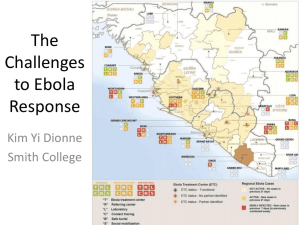
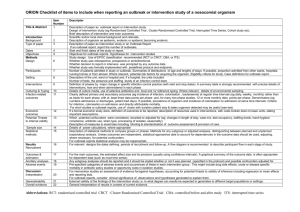

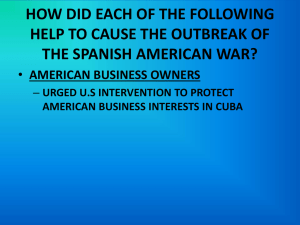
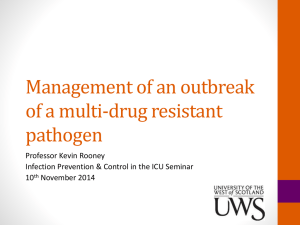



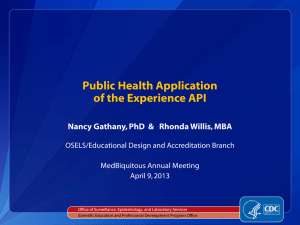
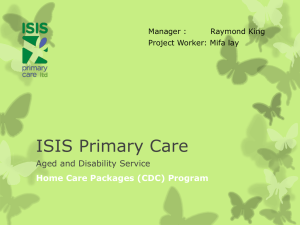
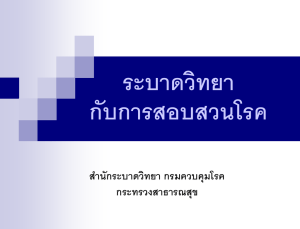
![Crisis Communication[1] - NorthSky Nonprofit Network](http://s2.studylib.net/store/data/005428035_1-f9c5506cadfb4c60d93c8edcbd9d55bf-300x300.png)